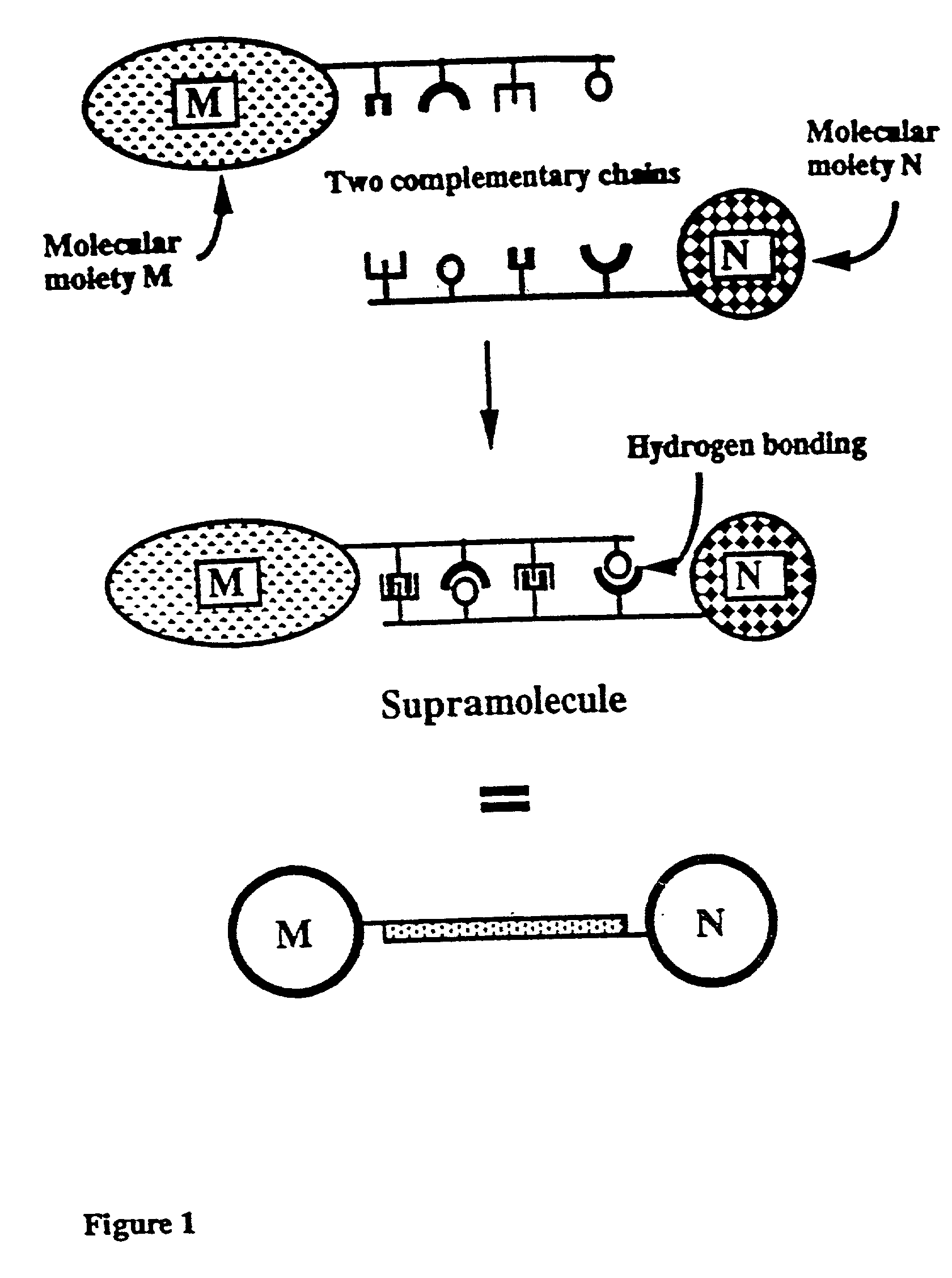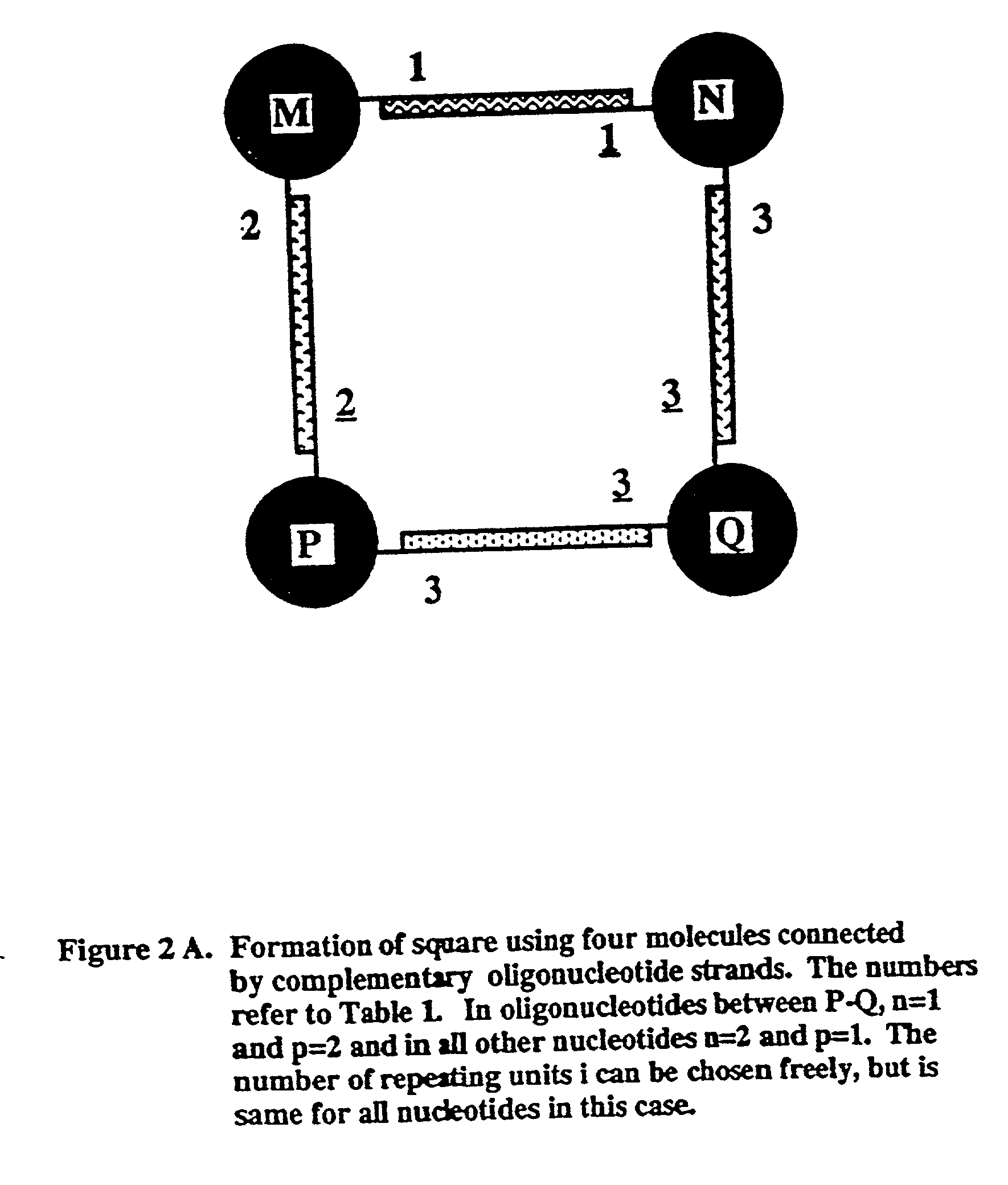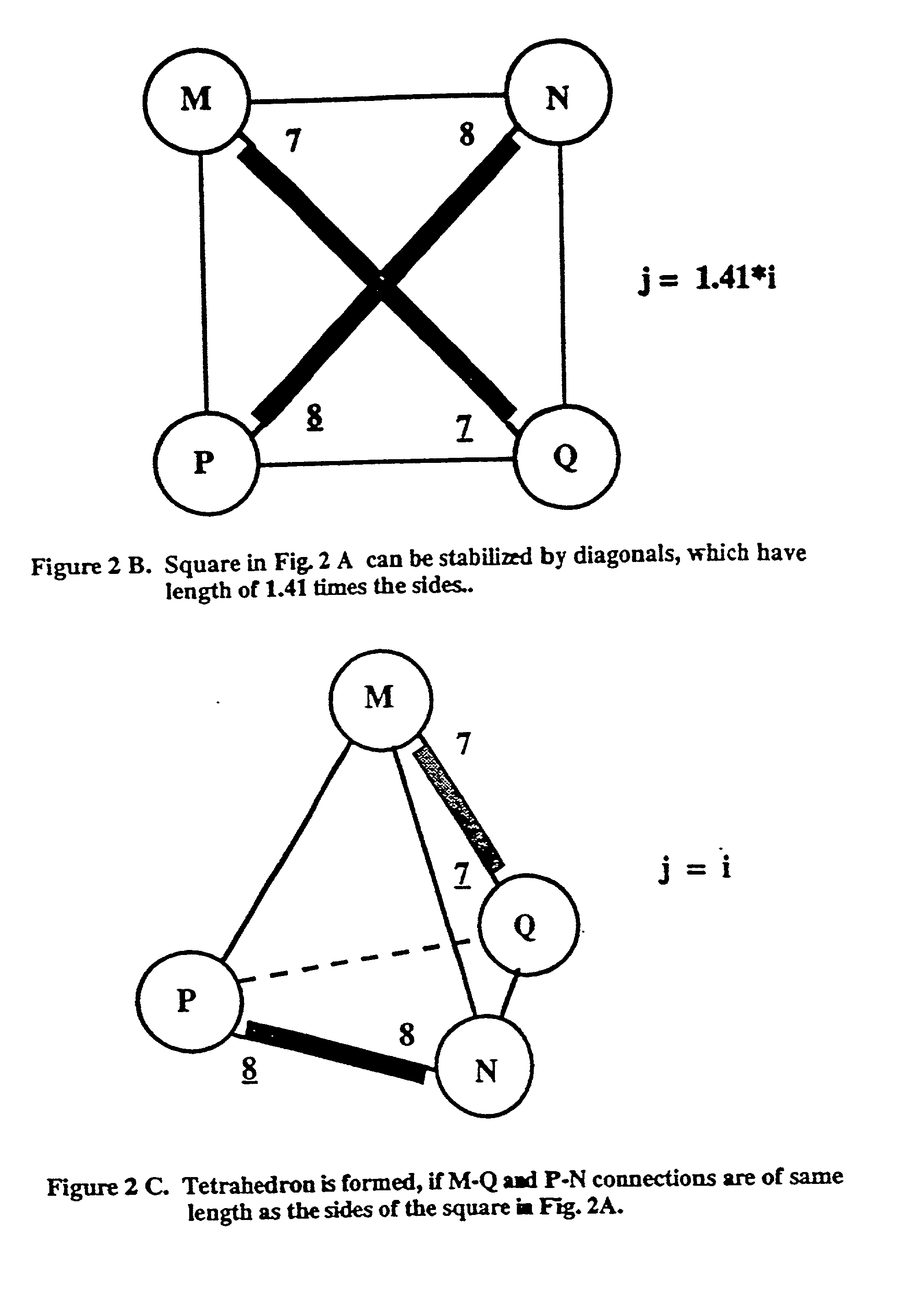Novel therapeutic binding molecule complexes
a technology of binding molecules and complexes, which is applied in the field of new therapeutic binding molecule complexes, can solve the problem that there is no process for creating today
- Summary
- Abstract
- Description
- Claims
- Application Information
AI Technical Summary
Benefits of technology
Problems solved by technology
Method used
Image
Examples
examples
[0103] 1. Illustration of Complementary Nucleic Acid Secuences
[0104] Table 1 provides examples of nucleic acid sequences and their complementary sequences that may be used in the present invention; the construction of complementary nucleic acids is known to the person of ordinary skill in the art.
[0105] For the purpose of these examples, complementary chains of nucleic acids are depicted as an integer and that integer underlined. For example, --(A.sub.n-C.sub.p).sub.i is identified as 1 in Table 1. Its complement, --(T.sub.n-G.sub.p).sub.i is labelled 1. With regard to the indices n, p, q and r used in Table 1, it should be understood that these indices are independent for each set of complementary nucleic acid chains.
1TABLE 1 Complementary Chain Unit Unit Complementary Chain 1 -(A.sub.n-C.sub.p)i (T.sub.n-G.sub.p)i- 1 2 -(A.sub.n-T.sub.p)i (T.sub.n-A.sub.p)i- n .noteq. p.sup.a 2 3 -(C.sub.n-G.sub.p)i (G.sub.n-C.sub.p)i- n .noteq. p.sup.a 3 4 -(A.sub.n-C.sub.p-G.sub.q)j (T.sub.n-G.s...
PUM
| Property | Measurement | Unit |
|---|---|---|
| Molar density | aaaaa | aaaaa |
| Therapeutic | aaaaa | aaaaa |
Abstract
Description
Claims
Application Information
 Login to View More
Login to View More - R&D
- Intellectual Property
- Life Sciences
- Materials
- Tech Scout
- Unparalleled Data Quality
- Higher Quality Content
- 60% Fewer Hallucinations
Browse by: Latest US Patents, China's latest patents, Technical Efficacy Thesaurus, Application Domain, Technology Topic, Popular Technical Reports.
© 2025 PatSnap. All rights reserved.Legal|Privacy policy|Modern Slavery Act Transparency Statement|Sitemap|About US| Contact US: help@patsnap.com



